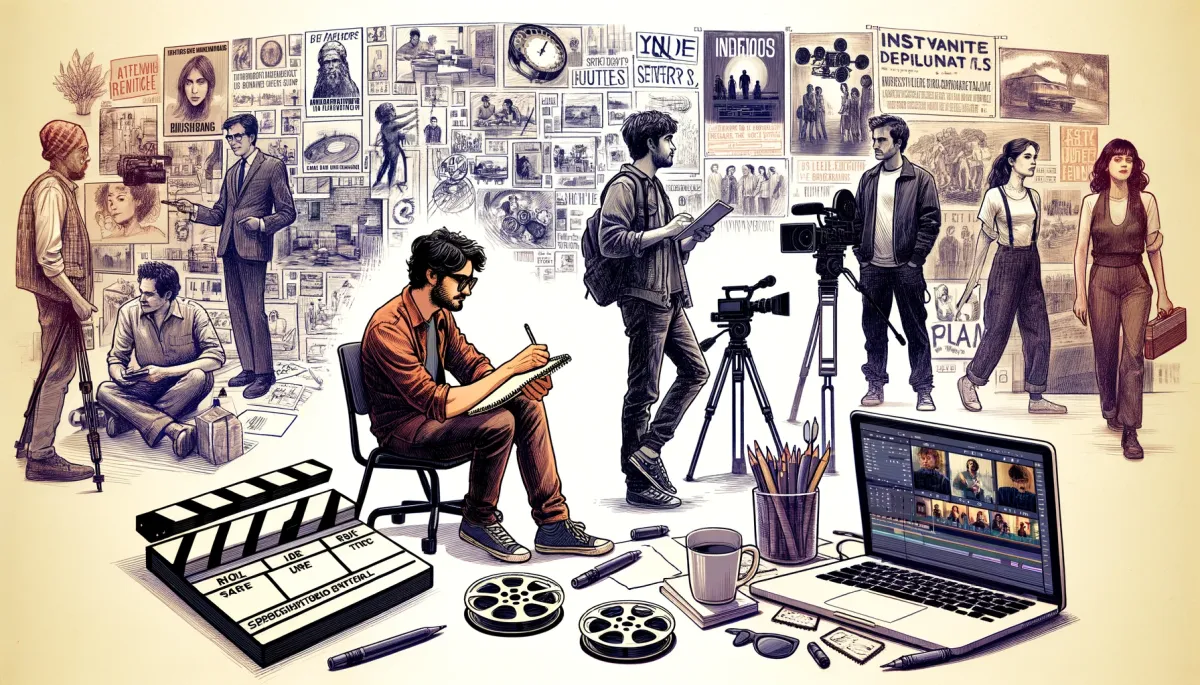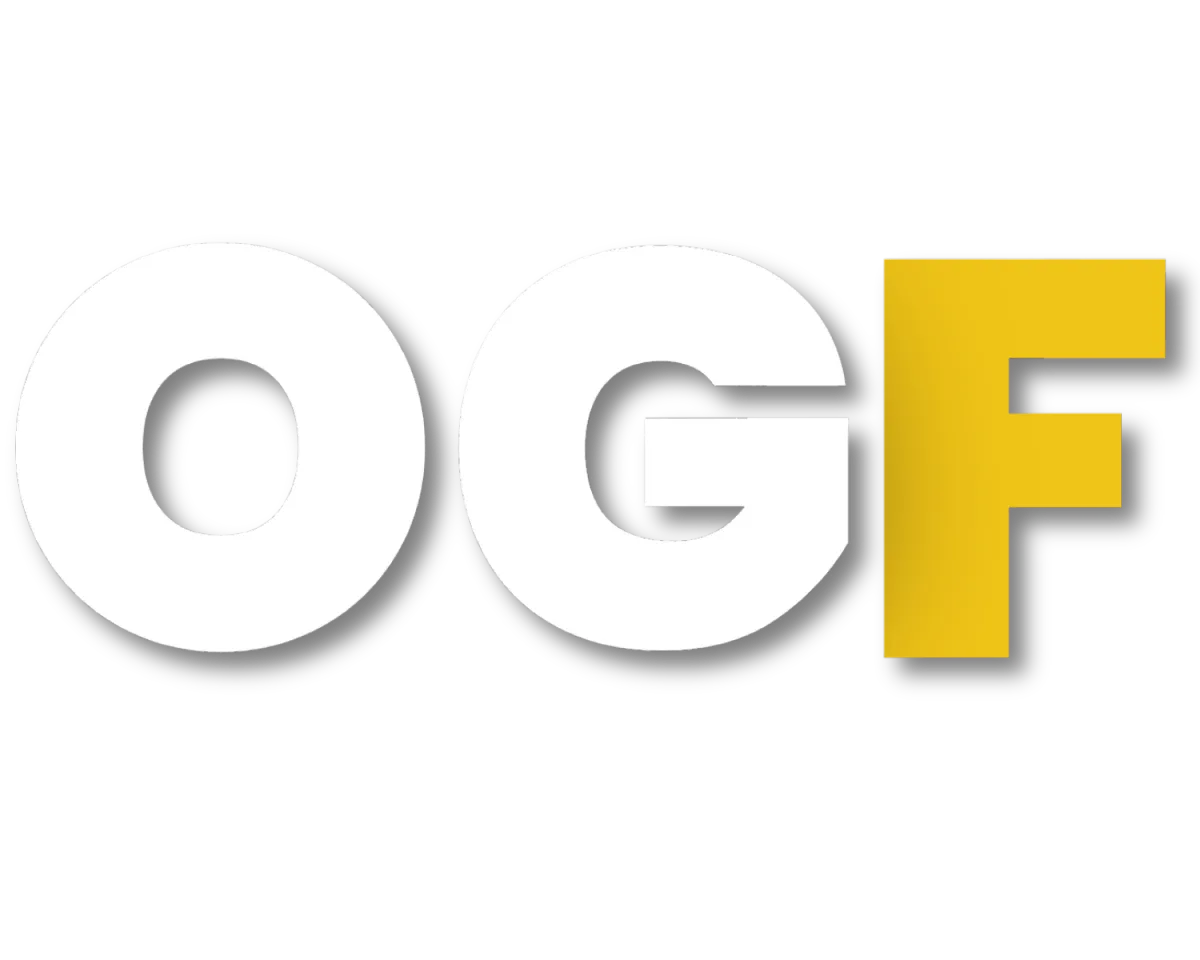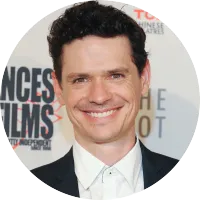GET MY FREE TRAINING
Learn how to use VALUE COMPOUNDING
to Fast Track your career.


Bootstrap Cinema: How to Launch Your Film Career Without a Budget
Diving into the world of no-budget filmmaking is an exhilarating challenge that demands creativity, resourcefulness, and a hefty dose of ingenuity. Think of it as the ultimate exercise in doing more with less, a core principle at the heart of One Grand Film's philosophy.

With that said, here are 5 tips to get that first feature off the ground! 👊
1. Embracing the Constraints
First off, let's talk about making a feature film with zero budget. It's all about embracing constraints as a form of creative liberation. Think of it as a 'less is more' philosophy. In a world where blockbusters boast astronomical budgets, your no-budget film is the David to the industry's Goliath. Here, your slingshot is resourcefulness, and your stones are the untapped resources at your disposal. Locations can be places you or your friends own; equipment can be borrowed or rented at minimal cost; and your cast and crew, a passionate group of volunteers inspired by your vision.
2. Costs of Low-Budget Filmmaking
Now, onto the cost of making a low-budget film. While 'low budget' is a relative term, the indie film community (and the actors' union SAGAFTRA) often caps this figure at $250,000. However, with guerrilla filmmaking tactics, you can drastically reduce this number to as low as Zero Dollars through exercising extreme creativity. It's about hacking the filmmaking process: using natural lighting, shooting with smartphones or DSLRs, and employing free editing software. The key isn't just to cut costs but to optimize every dollar spent towards what truly enhances your story.
3. Funding Your Feature
So, how much do you really need to make a feature film? If we're talking numbers, they can range wildly from $10,000 to millions. But in the "One Grand" Film fashion, let's not get bogged down by figures. Focus instead on the Minimum Viable Product (MVP) of your film. What's the least you need to effectively tell your story? Could it be done with just a compelling script, two actors, and a camera? Start there, test the waters, and scale with feedback. Rather than thinking about your budget in dollars and cents, think of it in relationships with talented people. If you don't yet have those relationships, head to social media and let out that inner extravert. Remember, just like you, every filmmaker needs those first few opportunities and would likely be willing to do them for the experience.
4. Average Budget Insights
Discussing the average feature film budget can be eye-opening. Major studio films often have budgets that soar into the hundreds of millions. Independent films, however, operate in a different universe, with many successful features made for under $100,000. This is where creativity becomes your biggest asset, and constraints your guiding star.
Indeed, while "The Blair Witch Project" and "Paranormal Activity" are often cited as no-budget success stories, they are outliers in the indie film landscape. A more relatable measure of success can be found in the works of filmmakers like Greta Gerwig, The Duplass Brothers, and Lynn Shelton, whose films exemplify how modest budgets can lead to significant career advancements without needing blockbuster returns.
Greta Gerwig's "Nights and Weekends," co-directed with Joe Swanberg, was made on a shoestring budget and showcased her multifaceted talent, setting the stage for her subsequent success as a filmmaker with critically acclaimed films like "Lady Bird," "Little Women," and most notably, "Barbie." The Duplass Brothers' "The Puffy Chair," with a budget of just $15,000, became a Sundance favorite, solidifying their place in the indie film world and paving the way for their prolific careers in both film and television. Lynn Shelton's "Humpday," made for under $15,000, won the Special Jury Prize at Sundance and showcased her unique voice, leading to a successful career directing both independent films and mainstream television.
These films, each made for far less than $100,000, demonstrate that commercial success and career advancement in the film industry don't solely hinge on blockbuster hits. Instead, they highlight the importance of authentic storytelling, creative ingenuity, and the ability to connect with audiences on a personal level. These filmmakers used their modestly budgeted projects as launching pads, proving that impactful stories, regardless of their budget size, can resonate deeply with audiences and critics alike, opening doors to new opportunities and establishing a foothold in the film industry.
Practicing what I preach, my now wife and I set out to make our own no budget feature film (final tally was $1,000 after returning a few things). The result was Go Crazy Go Mad, which I'm still rather proud of. You can catch it for free, here. Making this film paved the way for my second film, End Trip allowing me to raise more than $50,000 (find that one on Amazon.)
5. The Path Forward
To navigate this journey from IDEA to ACTION, consider this course as your roadmap. It's about breaking down the writing process into digestible, actionable steps. From IDEA to ACTION aims to demystify the leap from concept to creation in a zero budget kinda way.
For those seeking a more comprehensive dive, The COMPLETE Course serves as a treasure trove of filmmaking wisdom, guiding you through every nook and cranny of the zero budget filmmaking process. From pre-production puzzles to post-production magic, it's all laid out at The COMPLETE Course.
And for the trailblazers eager to fast-track their journey, the FILMMAKER FAST TRACK program is your express lane. It's not just about making films; it's about long term strategy, mixed with courses and weekly live calls with industry experts. Learn more about this game-changing approach at FILMMAKER FAST TRACK.
In the end, making a no-budget feature film is less about the financials and more about the mindset. With a Ferriss-like approach, it's about dissecting the process, leveraging available resources, and above all, embracing the journey with a lean, mean, filmmaking machine mentality.


